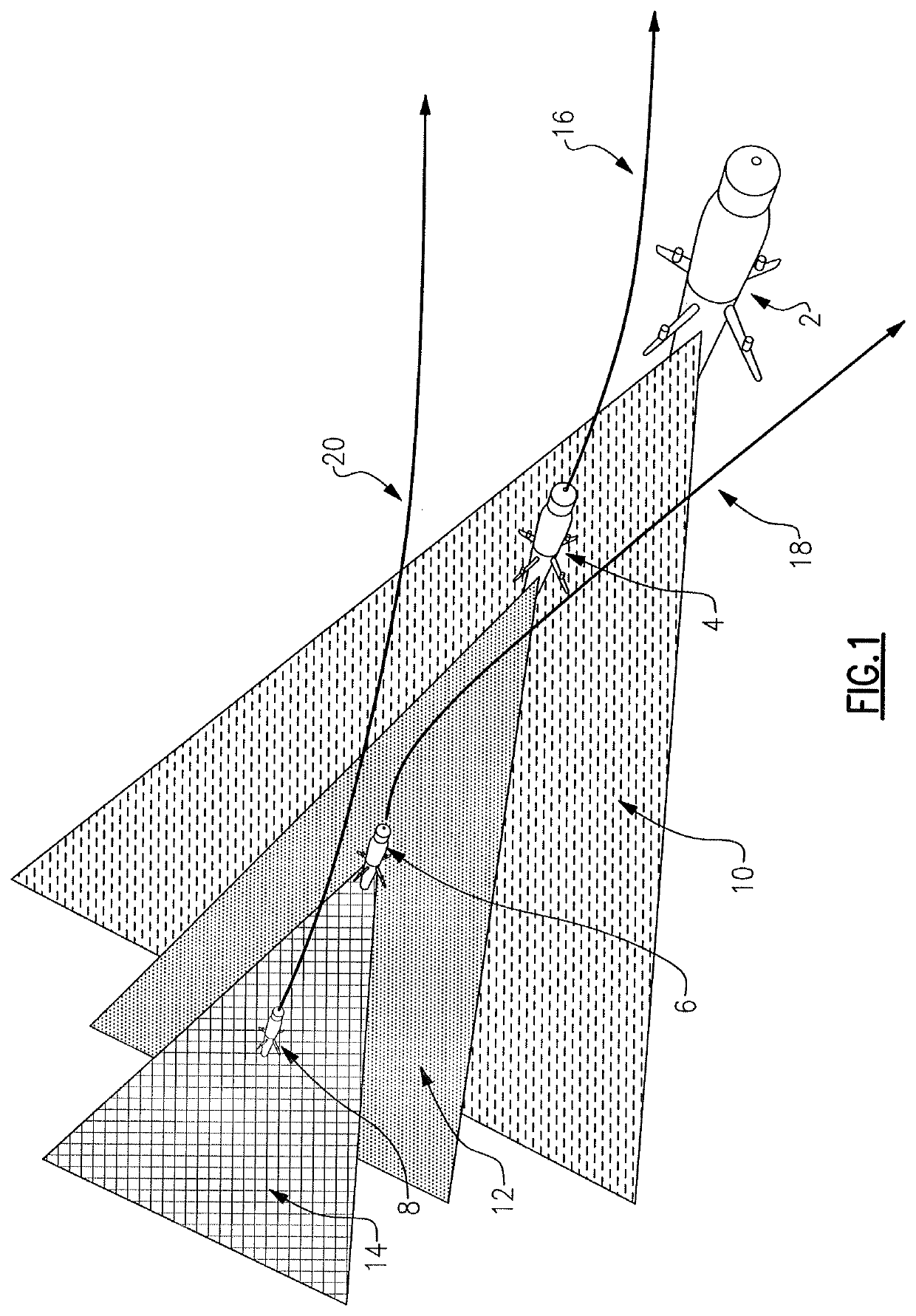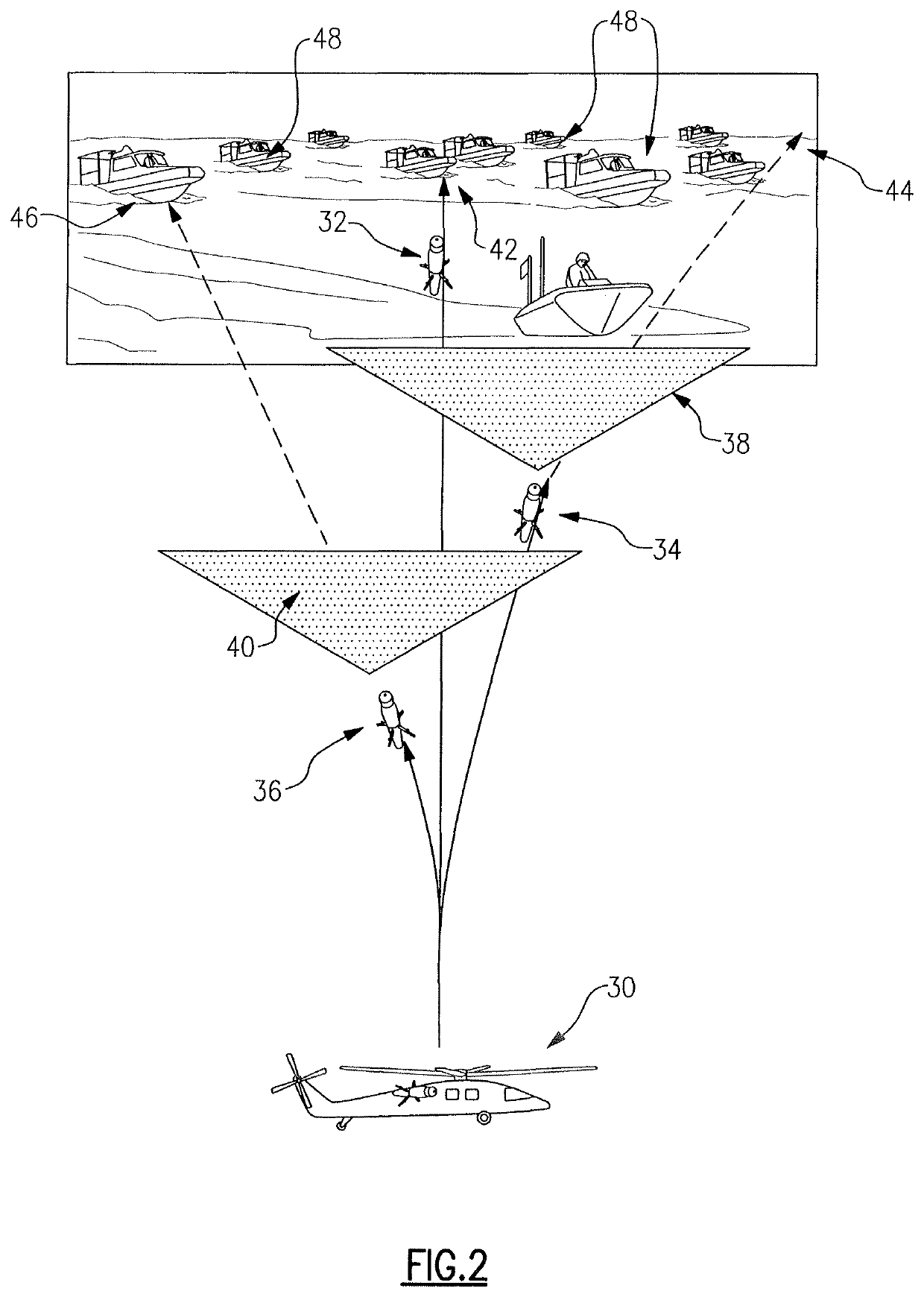Swarm navigation using follow the forward approach
a forward approach and swarm technology, applied in the direction of weapons, direction controllers, weapons, etc., can solve the problems of reducing the ability of current seekers to navigate to the target, reducing their ability to locate and identify targets to only 1 to 2 km, and time-consuming
- Summary
- Abstract
- Description
- Claims
- Application Information
AI Technical Summary
Benefits of technology
Problems solved by technology
Method used
Image
Examples
Embodiment Construction
[0028]One aspect of the present disclosure is a system comprising u plurality of rounds fired in a controlled sequence (rounds, missiles, guided rockets, free fall munitions, glide bombs, artillery, or the like) that act in concert or as an airborne constellation. A constellation in this context being a group of rounds working together as a system. Unlike a single round, a constellation can provide greater coverage than the sum of the individual rounds. These rounds navigate to a plurality of targets using a forward most round's position relative to a target array. The forward most round is guided by a laser designator to engage a specific target within the target array. As the forward most round approaches the target array (multiple targets in a formation), an imager (LWIR, NIR, Visible. SWIR or MWIR) is used by the forward most round to characterize the array in terms of number of targets, relative position of each target to each other, classification / ID of the multiple targets, e...
PUM
 Login to View More
Login to View More Abstract
Description
Claims
Application Information
 Login to View More
Login to View More - R&D
- Intellectual Property
- Life Sciences
- Materials
- Tech Scout
- Unparalleled Data Quality
- Higher Quality Content
- 60% Fewer Hallucinations
Browse by: Latest US Patents, China's latest patents, Technical Efficacy Thesaurus, Application Domain, Technology Topic, Popular Technical Reports.
© 2025 PatSnap. All rights reserved.Legal|Privacy policy|Modern Slavery Act Transparency Statement|Sitemap|About US| Contact US: help@patsnap.com



